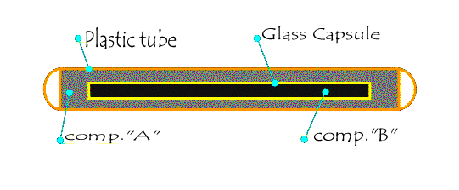
Light Sticks
Introduction
A light stick is a plastic tube which contains a glass vial or ampule and is activated by bending the tube in order to break the glass vial. This enables the chemicals in the plastic tube to mix with those in the glass vial, thus starting a chemical reaction.

http://www.terralink.bravehost.com/glow_stick%20_facts.htm
Light sticks release light by the process of chemiluminescence. There are three components to a light stick – 2 chemicals which react to release energy, and a fluorescent dye which absorbs this energy and converts it to light. The most common light sticks use the oxidant hydrogen peroxide with the chemiluminescent solution of an oxalic phthalate ester.
Light sticks generate chemiluminescence in an enclosed container which makes them suitable for use underwater and by children. The cost of assembly is low and there is the novelty of being able to carry a “tube of light”. Chemiluminescence therefore has become a profitable area of research both academically and industrially, and light sticks are the most basic use of this technology for consumers.